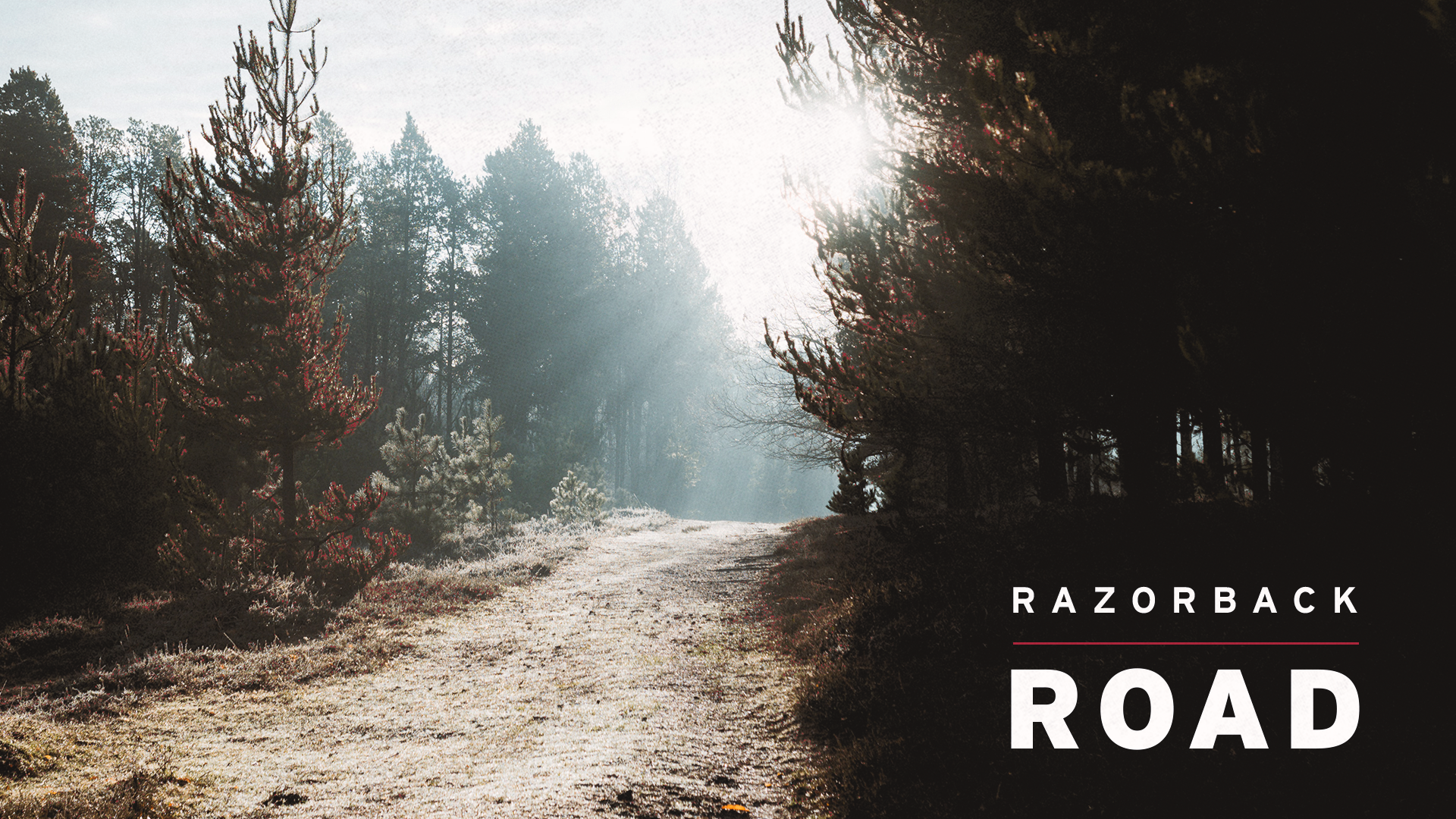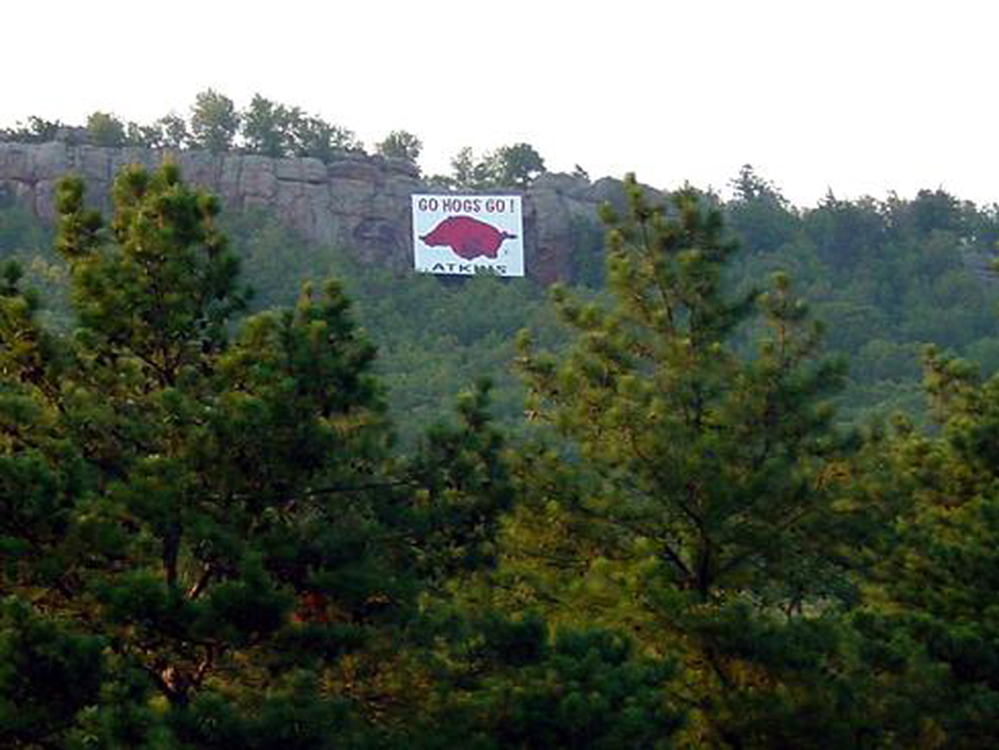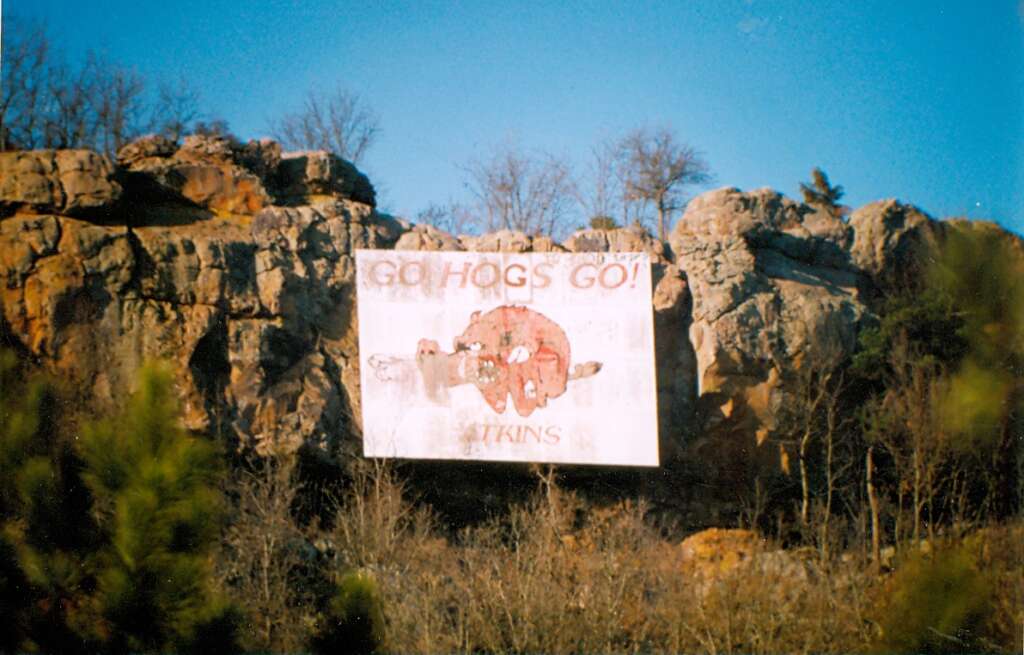
Sign for the Times
For many throughout our state, it is an annual rite of fall. Nearly as familiar as the Pig Sooiee itself, is the mass pilgrimage of Razorback fans along Interstate 40 either heading to north to Fayetteville or south to Little Rock dependent on your point of origin and the Razorbacks’ home field for that particular weekend’s game.
And although, the GPS suggests that the one-way journey today is only roughly 200 miles, the trip seems much more indelible in the memories of Razorback fans than simply three hours on the blacktop of a four-lane road.
Perhaps it is the memories of the Pig Trail or Old Highway 71, where a sign ominously reminded travelers how many people had died along the road in recent months with the admonition “Don’t you be next!” Or maybe it is the recollection of Razorback car flags furiously flapping in the wind giving you that first sense that game day is near.
We have our favorite places to eat, our preferred restroom stop and our always-the-cheapest gas station identified. Somehow there is comfort in the routine that helps us feel at home and connected with this Arkansas Traveler’s tradition.
For me, one of the signature moments of the journey comes when I glance up beyond the trees to see a landmark that has been displaying a Central Arkansas town’s Razorback pride for more than five decades. High above the freeway on the bluff of Crow Mountain, near Atkins, is a sign painted in Razorback Red. The “Go Hogs Go” sign has been serving as a landmark for fans traveling between Fayetteville and Little Rock for Razorback games since the mid- 1960s.
Like many small towns throughout the state, Atkins boasts a connection with the Razorbacks. Johnny Carl Fields was an inside linebacker for Broyles’ 1959-60 teams. While Fields was a starter for the Razorbacks, it was Atkins native Wilson Matthews made the greatest impact on football in the state. At Little Rock Central, his teams won 10 state championships in 11 years and posted a remarkable record of 111-14-3. Matthews joined Coach Broyles’ staff of Arkansas in 1958 and served as a coach until 1967, including helping guide the Razorbacks to the most prolific football era in school history. He later made his mark as an athletic administrator working with the athletic department and the Razorback Foundation until his death in 2002. Matthews is buried in Oakland Cemetery, just north of Atkins.
Matthews had already taken his coaching skills to Fayetteville by the time the Atkins Jaycees decided to erect the original sign on Crow Mountain sometime around 1964. Nestled between Mount Nebo and Mount Magazine, Crow Mountain provides breathtaking views of the region, including the Petit Jean Mountain and Ouachita Mountain range.
While specifics about the first sign, including the Jaycees’ rationale for constructing the sign, is uncertain, it is clear that the “Go Hogs Go” sign quickly became a part of the local heritage. But just as Broyles was stepping down from his coaching days in Fayetteville, the original sign was showing the effects of more than a decade of wear and tear and some onerous vandalism.
In 1977, Dardenelle native Bill Harshaw heard that the Atkins Civic Team intended to renovate the sign. Inspired by a personal devotion for the Razorbacks, the 26-year old artist volunteered to take on the task and was soon painting a replacement sign in the old Atkins High School gymnasium. The new sign was made up of four-by-eight foot sections of plywood covered with metal siding and was 24 feet high and 32 feet wide, including a Hog spanning 16 feet tall and 24 feet wide. After three days of painting, the sign which weighed nearly a ton, was taken apart and hauled to the top of the mountain where it was reassembled and lowered into place on the side of the mountain.
The sign featured the signature “Go Hogs Go” to the left of the Razorback, but a new wrinkle was added as part of the most recent version. On the left of the Razorback were the words “Go Bobo,” a tribute to Atkins High school graduate and then current Razorback running back star Donnie Bobo.
During the course of the next two decades, the sign saw periodic updates and an occasional replacement, but by 1998 the sign had become more of an eyesore rather than a point of civic pride. The sign’s plywood had been blackened and severely damaged after a fire was set deliberately under its base. The heat of the fire separated the layers of plywood and paint was peeling away. The sign had become so dilapidated that Razorback Foundation officials formally asked the town to either repaint the sign or remove it.
According to an article in The Atkins Chronicle, in February 1998, The People for a Better Atkins (PBA) met to discuss the future of the sign. One Crow Mountain resident told the PBA that despite recent upgrades to the site by then landowner Genevieve Lemley, including a security fence, the bluff had turned into a site where people dumped old tires and where drug users and drug dealers gathered. Several other residents argued to keep the sign and restore it, citing the sign as a source of pride for Atkins. In the end, the PBA voted 12-3 to remove the sign rather than to assume the estimated renovation cost of more than $6,000.
But before the sign could be removed, Atkins’ most famous native son engineered another comeback victory, this time for the sign that had become synonymous with his hometown for more than 30 years. Matthews worked with local leaders and with his boss at the University of Arkansas, Frank Broyles, to foster a compromise that helped provide the required permission from the University and the necessary $10,000 funding to renovate and preserve the tradition.
On Sunday, Aug. 2, 1998, a day after strong winds caused a 24-hour delay on its installation, a new “Go Hogs Go” sign was affixed to the side of the mountain with the help of a crane. The new sign was comprised of 40 four-foot by eight-foot corrugated plastic panes supported by steel plates in the front and the back. The Hog logo and lettering was baked on the sign rather than painted like previous versions. More than 20 years later, the sign still stands atop Crow Mountain.
Although it is no longer a popular tourist destination, the Atkins “Go Hogs Go” sign still serves as a beacon to fans from all corners of the state traveling back and forth to cheer on their beloved Razorbacks. It is just another spot along the Razorback Road connecting our state one passing car at a time.
Razorback Road is a column written by Senior Associate Athletic Director for Public Relations and Former Student-Athlete Engagement Kevin Trainor (@KTHogs). Trainor is a graduate of the University of Arkansas and has worked for Razorback Athletics for more than 25 years.


